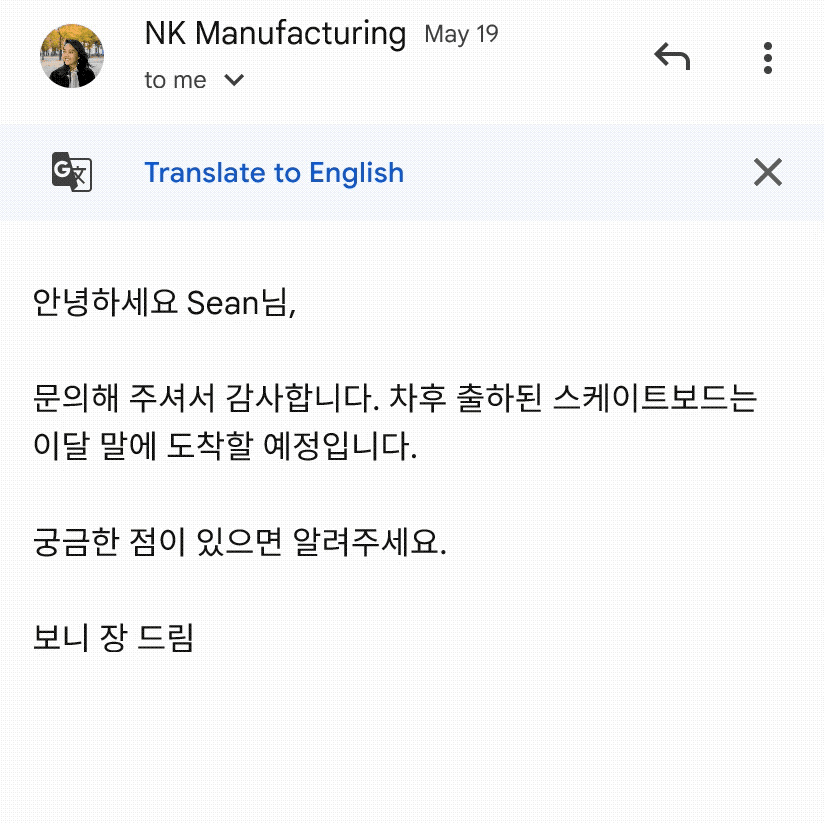Η Google announcementwith a small change in Gmail that we will see in the next few days. Starting today, some Gmail users will be able to translate emails on their phones without having to leave the app.
Until now, this was only possible on Gmail web, which supports translation to and from more than 100 languages. The latest Gmail update has added translation to the mobile app as well, which will allow users to communicate in multiple languages faster and easier.
After downloading the update, a new one will appear banner with the possibility of closing if the language of the content of a message is different from the “Google.com Mail Display Language” in your account settings.
Alternatively, Gmail users can choose to always or never translate specific languages. To translate a message, just click on choice "Translate" at the top of the message.
Those who turn off the translation option will see it again the next time an email content language doesn't match the “Google.com Mail Display Language”. Of course, adding translation to the mobile app also comes with an opt-out option, which means you never see the banner for a particular language.
To disable the setting, you must accept the “Do not translate again” option that appears when you close the banner or by selecting “Do not translate again” from the translation settings menu.
According to Google, Android users will start seeing the new one mode from today, but the disposition may take up to 15 days. On the other hand, iOS users will be able to translate their emails on their devices starting August 21.





